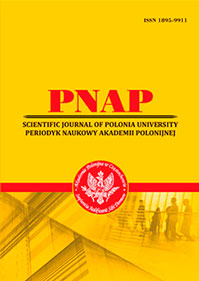PRIMARY AND SECONDARY SEMANTICS OF ENGLISH BASIC GUSTATORY ADJECTIVES
Abstract
The article is devoted to the study of the primary and secondary semantics of English basic gustatory adjectives. There are four main types of taste: sweet, bitter, sour, and salty. The literal meaning of gustatory adjectives is directly related to the food sphere, and figurative meaning is based on a metaphorical reinterpretation of primary semantics. During the analysis we singled out three literal meanings of the adjective sweet (1) “having a taste like that of sugar”, 2) “not rancid or stale; fresh”, 3) “not salt or salted”), one literal meaning of the adjective bitter (“having a sharp, biting taste, like beer or black coffee without sugar”), two literal meaning of the adjective sour (1) “having a taste like that of a lemon or of fruit that is not ready to eat”, 2) “having the taste of fermentation”) and one literal meaning of the adjective salty (“tasting of salt or containing a lot of salt”). As for figurative meanings, we identified six figurative meanings of the adjective sweet (1) “having a pleasant smell”, 2) “having a pleasant sound”, 3) (of emotions or events) “making you feel happy and/or satisfied”, 4) “(especially of something or someone small) pleasant and attractive”, 5) (of people) “kind and pleasant”, 6) (of air) “pleasant and not containing any harmful substances”), six figurative meanings of the adjective bitter (1) “(of arguments, disagreements, etc.) very serious and unpleasant, with a lot of anger and hatred involved, 2) “(of people) feeling angry and unhappy because you feel that you have been treated unfairly”, 3) (of events, experience, etc.) “making you feel very unhappy or disappointed”, 4) (of attitude) “characterized by intense hostility”, 5) (of tone) “sarcastic or cutting”, 6) “(of weather conditions) extremely cold and unpleasant”), three figurative meanings of the adjective sour (1) “(of people) not cheerful; bad-tempered and unpleasant”, 2) (of facial expressions) “unfriendly”, 3) (of situations) “unpleasant”), and two figurative meanings of the adjective salty (1) “(old-fashioned) (of language or humour) amusing and sometimes slightly rude”, 2) (slang) “annoyed or upset, especially when this is unreasonable”). It is reported that during the process of metaphorization a synesthetic shift occurs from the sphere of taste modality to the spheres of olfactory, auditory, visual and tactile perception, as well as a similar categorical shift can be onserved in the sphere of emotional experiences and rational understanding of phenomena associated with positive or negative evaluation of impressions.
References
2. Ковпік С.І. Поетика густативів (на матеріалі сучасної української прози) : монографія. Київ : «НВП Інтерсервіс», 2018. 150 с.
3. Колегаева И.М. Сенсорная метафора и синестезия как языковой феномен: лингвокогнитивный аспект. Записки з романо-германської філології. Одеський національний університет імені І.І. Мечникова, факультет романо-германської філології. Вип. 2 (41). 2018. С. 56–66.
4. Собчук Л.А. Семантична структура мовних одиниць на позначення смакових сенсибілій у сучасній німецькій мові. Науковий часопис Національного педагогічного університету імені М.П. Драгоманова. Серія № 9. Сучасні тенденції розвитку мов. Вип. 2. 2007. C. 249–253.
5. Степанчук А.П. Сучасні погляди на структурно-функціональну організацію органа смаку людини. Український журнал медицини, біології та спорту. Миколаїв, 2020. Т. 5. № 4. С. 55–60.
6. Тулюлюк К. Лінгвопрагматика сенсоризмів у ґендерному вимірі (на матеріалі англійськомовної прози початку XX століття) : автореф. дис. ... канд. філол. наук : 10.02.04. Чернівці, 2016. 20 с.
7. Шевелюк В.А. Контрастивні особливості вторинної семантики соматизмів у фразеологічних знаках іспанської, української та російської мов. Науковий часопис Національного педагогічного університету імені М.П. Драгоманова. Серія 9. Сучасні тенденції розвитку мов. 2007. Вип. 1. С. 278–284.
 ISSN
ISSN 


.png)



